The common people frequently misunderstand the two key physics concepts of force and pressure.
However, these two are not similar in any way because there is a major difference between force and pressure that can only be understood by studying them. Such as have you ever seen and thought about how a desk can move and how a chair can be pull? These all happen by exerting force and pressure.
Let’s first learn about pressure and force for a better understanding.
Table of Contents
Definition of Pressure
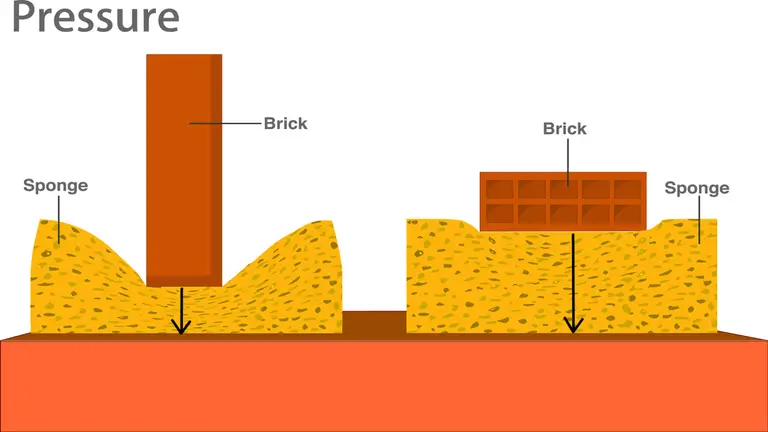
Force per unit of area is referred to as pressure. The impact of a force across an area is measured by pressure.
Pascal is the commonly used unit of pressure.
Definition of Force
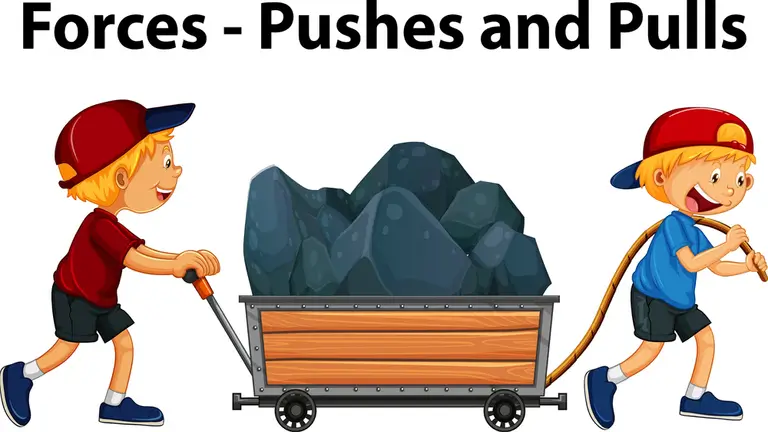
A force is an interaction that causes an object to move or alters its state of motion.
Newton is the unit of force. Therefore, the force, or weight, of an object with a mass of one kilogram is 9.8 Newtons.
Explanation of Force in Detail
Force! We frequently hear this term used. We may not even be aware that we are utilizing it on a daily life basis.
The most common daily actions that use force are opening doors, riding bicycles, and lifting objects.
Imagine a ball is at rest on the ground. It doesn’t move.
Consider a situation when a player needs to pass the ball to a teammate on the opposing side of the field.
How is he going to achieve that?
He needs to move this ball in his teammate’s way. He will kick the ball to his teammate.
We say that he put force on the football when he kicked it.
Yes, the force he used to strike the ball was all that the kick was.
Let’s say point “A” is where we have a desk. From position “A” to point “B” someone wants to move this desk.
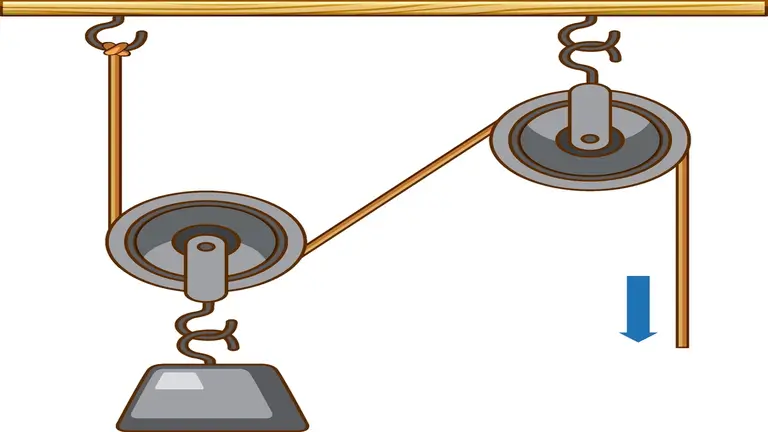
How will he accomplish the task once more?
He now moves the desk in the direction of “B.” In this instance, someone exerted force on the desk to move it.
The individual who pushed the desk here used some force. Similarly, we say you exerted force on an object when you lifted it off the table.
In this situation, lifting is used to apply the force. Therefore, actions done on things, such as kicking, pushing, lifting, etc., results in forces.
We can carry out a variety of such actions.
A number of these have already been observed. Below are a few more of them:
- To keep a bicycle moving while riding it, we must continuously pedal. In this case, the force we use on a bicycle is pedaling.
- Hitting a wood surface with a hammer also exerts force on the material.
- A moving ball action is performed even for stopping. Applying force to the ball is what stops it. To stop the ball, we exert some force.
- Other actions done on things including pulling a guitar string, opening a drawer, and moving a piece on a chessboard.
Therefore, doing these things to objects is just exerting force on them.
Nothing but the push or pull imparted to things constitutes a force. Forces result from the interaction of bodies or objects.
An example of how the player and ball interact.
All of these activities (force) can be divided into two categories.
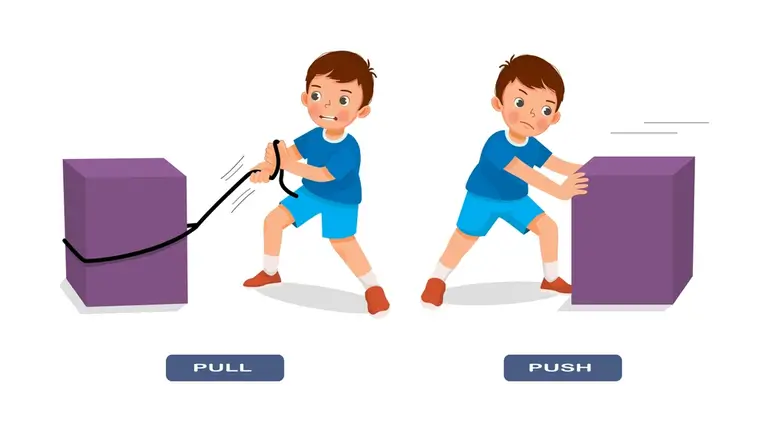
- Pulling.
- Pushing.
Let’s say there is a box on the earth. You can either push it away from you or pull it towards you. Therefore, both definitions apply to moving an object.
Learn more: What is the Difference Between Vaporization and Evaporation?
Explanation of Pressure in Detail
Pressure provides a means to quantify how strongly an object is experiencing or applying a force by dividing the force’s magnitude by its area.
If a force is being spread over a small, concentrated area, the pressure will be very high, but if the force is being spread over a vast area, it will be spread out, and the pressure will exert itself in a comparatively low manner.
For example, if you hit a wood with a hammer, you would exert pressure on the wood by applying force to the area of the wood.
For instance, if you exerted 800 newtons of force on a piece of wood with a surface area of 0.0001 meters squared, it would result in producing 8 million pascals of pressure.
The pressure, in this instance, was brought on by the impact of the hammer and the wood.
Pressure is also created by the particles that make up liquids and gasses constantly crashing into their environment.
For instance, in the case of gas, if we had a container of gas, the pressure would be created by the gas particles colliding with the wall of the container.
For instance, in the case of liquid, if we had a beaker of water, the water’s particles would exert forces in all directions as they collided with the glass walls on the sides and with the air at the surface, creating pressure.
Relation Between Force & Pressure
Force is the amount of push or pull applied to a body. It reveals how a body has been pulled or pushed.
While pressure is a measurement of how well that force was used. As you may already know, pressure is determined by the force-to-area ratio.
You may assess how much of the applied force is utilized if your area is changeable while the applied force remains constant.
Example:
In essence, force is a push. The weight of a lady presses down on the ground.
The same force, called pressure, is present everywhere.
Force Vs Pressure
Pressure Vs Force: (Definition)
The difference between force and pressure is that pressure is a force applied to something in a vertical direction to its surface. In contrast, force is any push or pull that an object receives as a result of two bodies interacting.
Pressure Vs Force: (SI Unit)
Another difference between force and pressure is that force is measured in Newton whereas pressure is measured in Pascal.
Force Vs Pressure (Symbol)
In comparison between pressure vs force N stands for the force symbol, while Pa is the symbol for the pressure unit.
Force Vs Pressure (Quantity & Direction)
Pressure is a scalar variable, whereas force is a vector.
Force has both a magnitude and a direction because it is a vector quantity.
While pressure lacks direction because it is a scalar variable.
Difference Between Pressure and Force
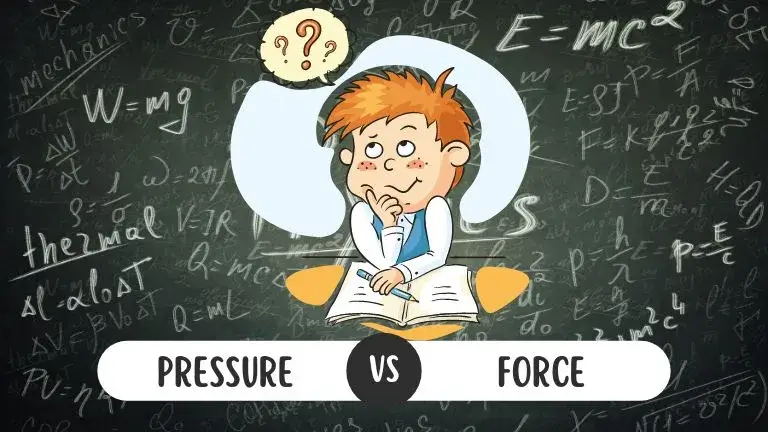
Highlighting the comparison between force and pressure in the following table:
| Force | Pressure |
| The object moves as a result of push and pull forces. | Pressure is the force that is applied to the surface of a specific area. |
| The unit of force is Newton. | The unit of pressure is Pascal. |
| The symbol of Newton is N. | The symbol of Pascal is Pa. |
| Force is a vector quantity. | Pressure is a scalar quantity. |
| A dynamometer is used to measure force. | A manometer is used to measure pressure. |
Conclusion
The main difference between force and pressure is that the effort required to push or pull anything is referred to as force while pressure is created by dividing the force by the area it is acting on. Force has both direction and magnitude while pressure has no any direction.


